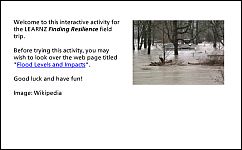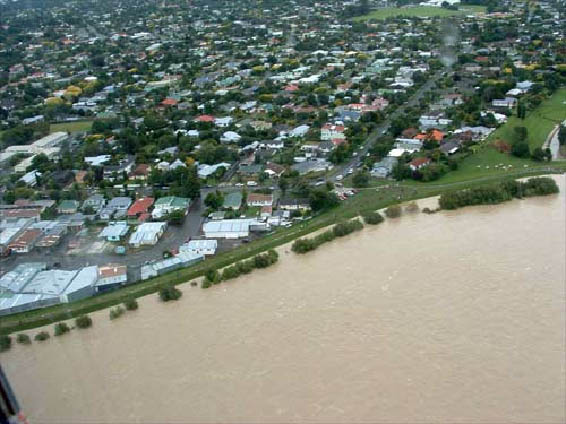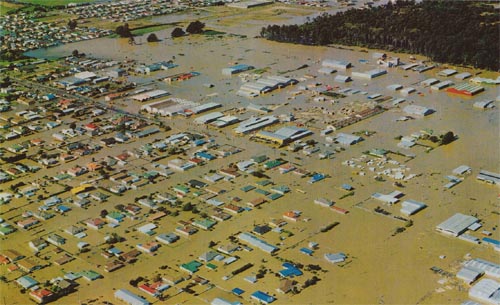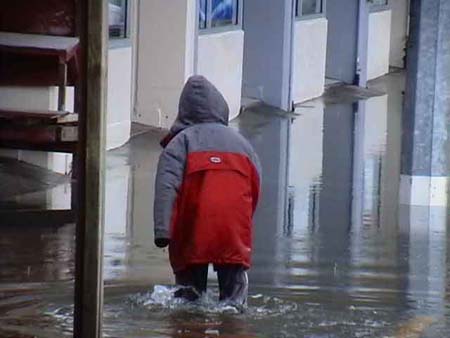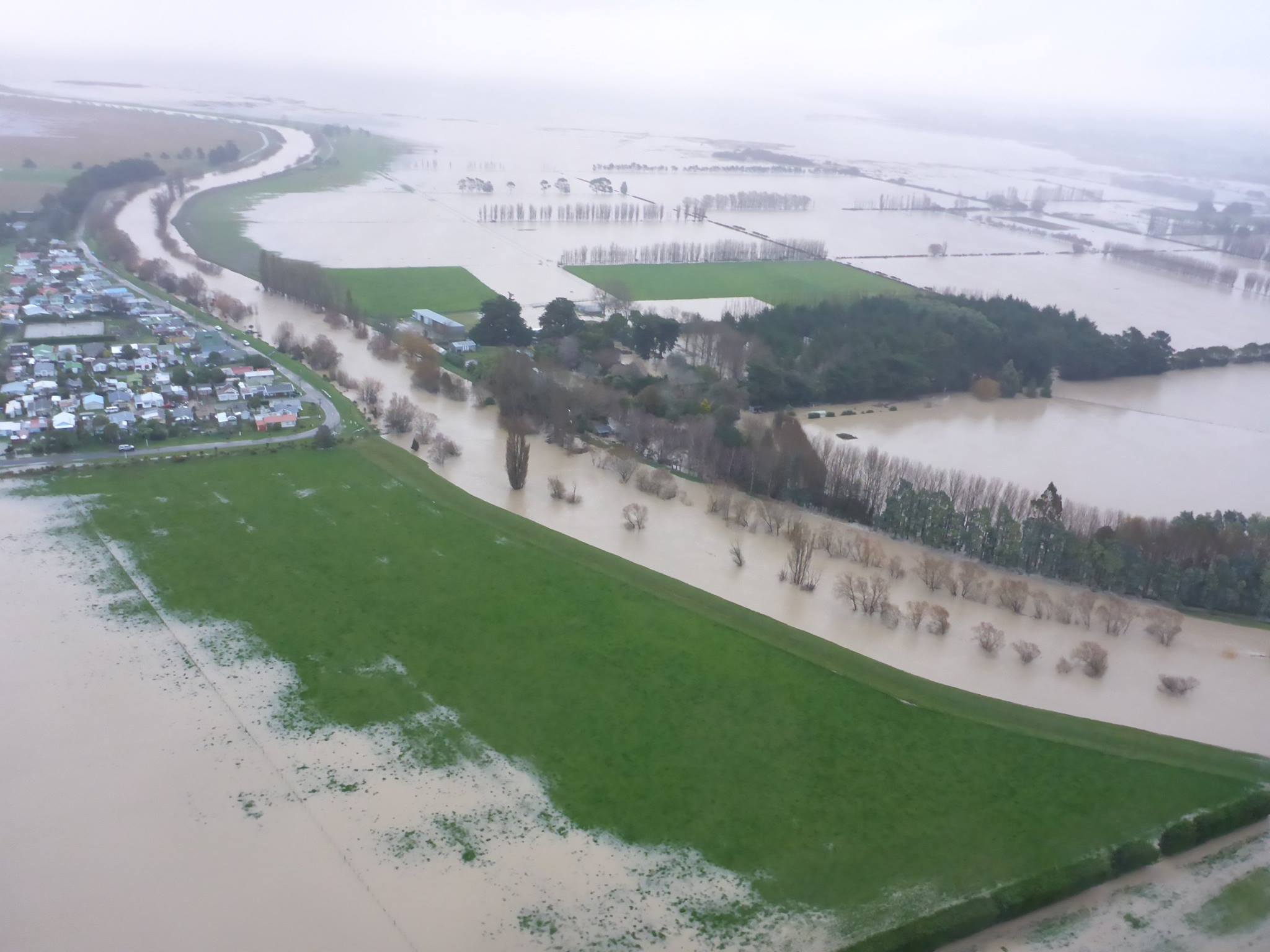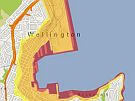Floods are New Zealand’s number one hazard in terms of frequency, losses and declared civil defence emergencies.
What is a flood?
Floods can occur as a result of storms and heavy rain which cause rivers to overflow their banks. They can also be caused by high tides.
What damage can floods do?
Floodwaters can destroy the land, washing away roads, bridges, railway tracks and buildings. Crops can be ruined and livestock drowned.
Lives are also at risk, particularly in flash floods when the water has risen very quickly. Fast-flowing, deep water filled with debris like tree branches and sheets of iron can be very dangerous to people.
Managing floods
Regional and District councils manage flood hazards. They maintain flood protection works such as stop banks, and monitor:
- rainfall
- river flows
- and lake levels.
Gauges measure rainfall and river flow, a network of gauges are used to monitor river catchments and the potential for floods. The more gauges there are the more accurate and useful the data is for predicting future floods.
The first signs of potential flooding are the heavy rain warnings issued by weather forecasters. In addition, the councils independently operate networks of automated instruments that measure rainfall and river levels. Data from these instruments, and high rainfall rates or rising river levels, may trigger automatic warnings.
Computer models
Computer models of rainfall and river flow are used to determine likely rises in river and lake levels downstream, and supply warning information to communities. Councils organise evacuations, build sandbag barriers, and close roads. Most councils maintain websites and telephone services that inform the public about rainfall and river levels.
Challenges in flood management
To manage the impact of floods people need to know how likely floods are and what level these floods might reach. Floods are often described in terms of how often they are likely to occur based on past experiences. You may have heard of a flood being described as a one in one-hundred-year event. There are many things that can impact on flooding such as:
- how saturated the ground already is
- how much debris ends up in rivers
- how much sediment the river carries
- whether the area is vegetated, farmland or developed
- what is happening up stream
- how stormwater and wastewater are managed
Computer models need to take these factors into account.
Location based information
GPS technology and LiDAR (Light detection and ranging) are helping to predict, measure and respond to flood events. LiDAR works by shining a laser at the surface and measuring the time it takes for that light to bounce back to the receiver. Very fast computer systems can record this data and translate it into heights so for example the surface of the land can be very accurately mapped. The elevation of land needs to be known in order to identify flood-prone areas.
Mapping flood-prone areas 
As even major river works may not prevent flooding, there are now measures to alter the way flood-prone areas are developed. Flood prone areas are mapped using very accurate information on;
- land elevation
- past rainfall
- past flood levels
- land use
The most at risk areas cannot be built on. Minimum floor levels are set for urban areas so that people build above known flood levels.

